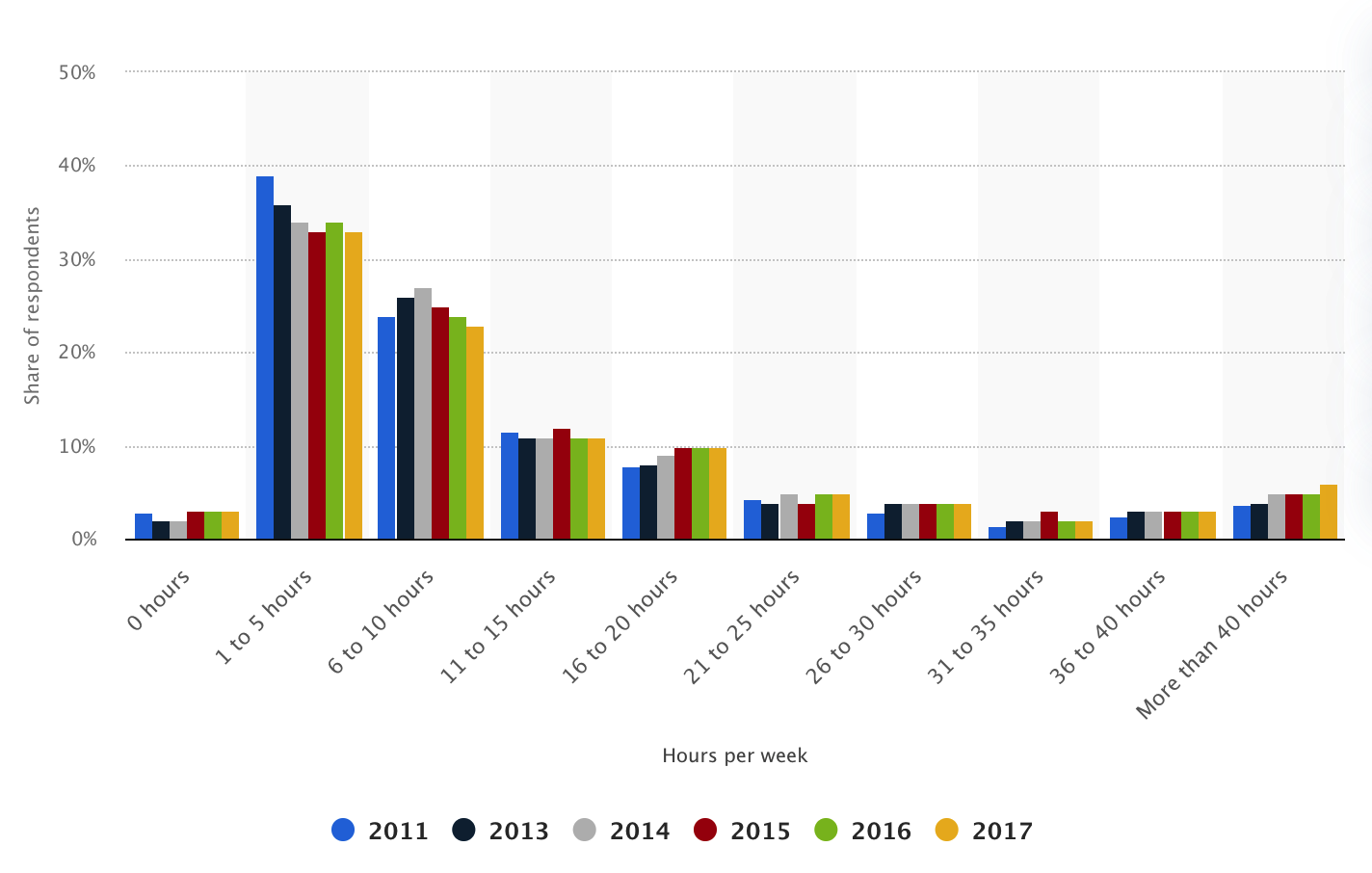On average, companies see a 14.5% spike in sales productivity after using a marketing automation strategy.
Further, 80% of marketers report generating more leads, and 77% experience higher conversions.
Here’s a step-by-step game plan for designing your own automation strategy to target leads at every stage of the customer journey.
Set Up Email Drip Campaigns
Email marketing is a great starting point for a marketing automation strategy and follows a simple sequence:
- Capture a lead’s contact information (typically through gated content like an eBook or whitepaper).
- Create a series of emails to send to the lead based on a specific action.
- Nurture them throughout the customer journey until they’re ready to buy.
Considering more than 70% of leads aren’t initially sales-ready, email marketing automation provides a framework for building trust and rapport and gently nudges them toward eventually making a purchase. All the while, you’re automating the process with zero exertion on your end.
Here’s what a typical email marketing automation campaign may look like:
- Start with a welcome email
- Curate a list of relevant blog posts based on the specific content a lead viewed on your site
- Send an email elaborating on key products they showed interest in
- Send an offer to participate in a free product demo
- Follow-up with testimonials and case studies
- Offer a free trial to get a feel for the product
Also, note that emails for nurturing purposes like this have a significantly higher click-through rate of 8% than general emails at just 3%.

Source: HubSpot
They also receive four to 10 times more responses than regular emails.
Automate Retargeted Ad Sequences
Say a lead checked out your site, browsed through a couple of products, but didn’t buy.
Automated retargeting is a simple way to pull them back into your B2B marketing funnel and display hyper-relevant content that’s personalized to their interests.
Here’s what this B2B marketing process looks like.
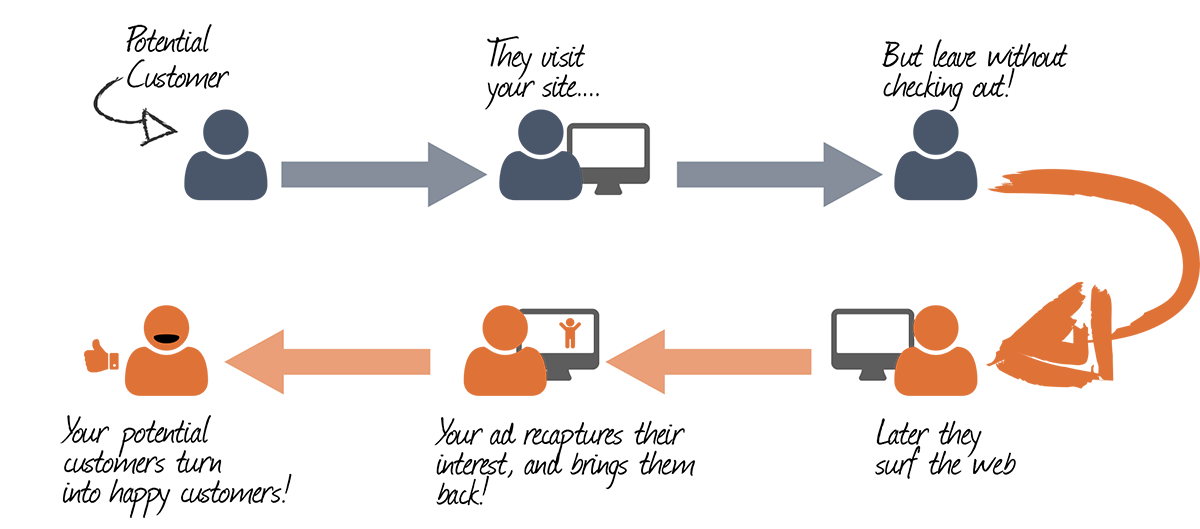
With a retargeting marketing strategy, you can get your brand and products back in front of leads that have expressed some level of interest but weren’t ready to pull the trigger.
And here’s why it works.
First, 25% of leads are happy to see retargeted ads. Unlike many ads that pop up randomly and may not be relevant to a user, retargeted ads remind them of specific products they previously viewed.
Also Read: Marketing Automation Examples
Next, 60% of leads notice and legitimately consider this type of automated marketing.
With many of today’s users tuning out ads where they essentially become “white noise”, retargeted ads are much more effective at grabbing their attention.
In turn, this results in a click-through rate that’s 10x higher than normal display ads, and users that are retargeted are 43% more likely to convert.
It’s just a matter of creating a personalized experience that serves up ads that are relevant to browsing behavior.
If, for instance, someone was interested in streamlining asset operations for their company and checked out this page from the ManagerPlus website.

Source: ManagerPlus
They could be served this ad later on Facebook to encourage them to explore product solutions.
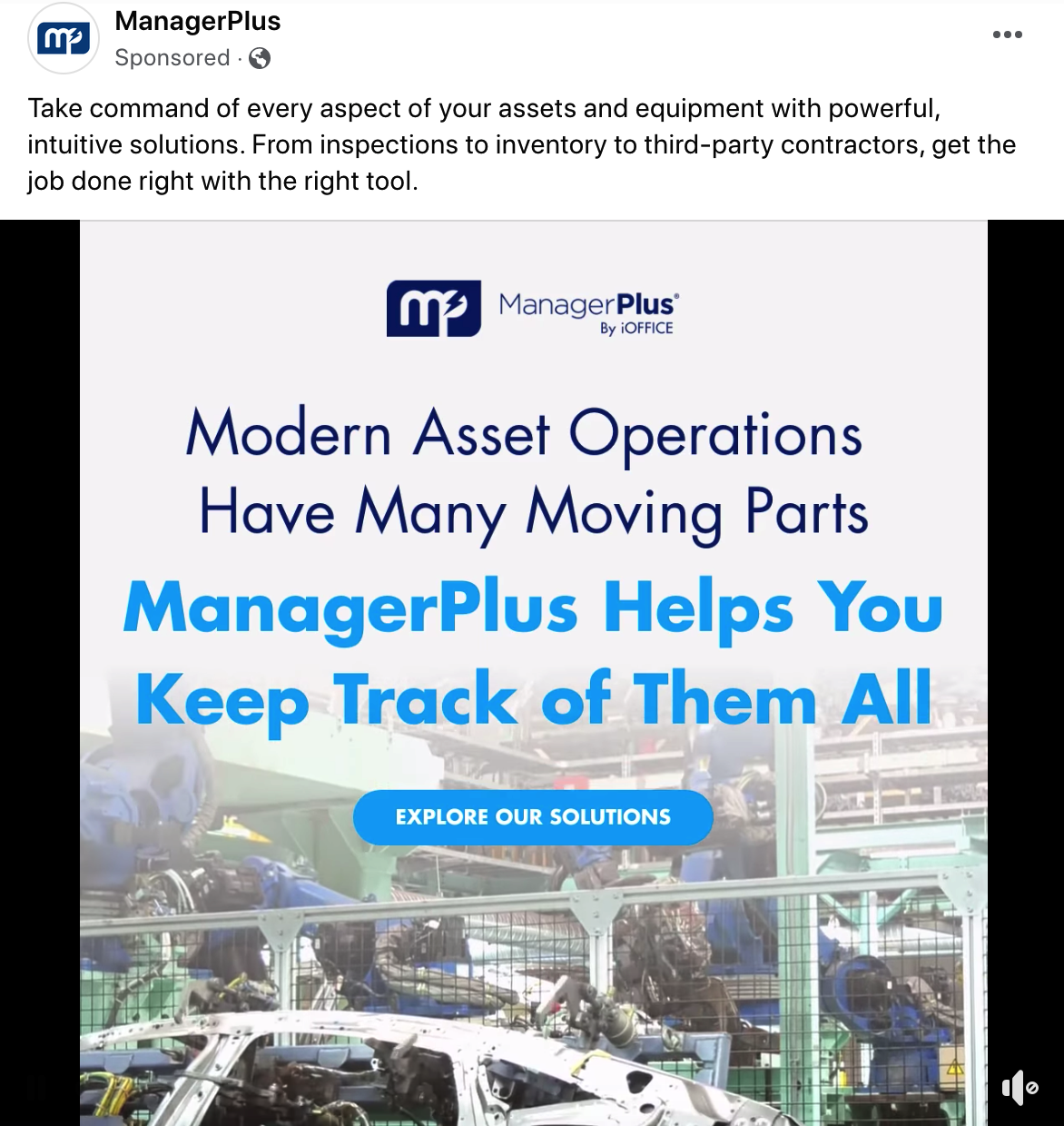
Source: Facebook
Use Chatbots
The use of chatbots for business and digital marketing purposes is set to explode throughout this decade.
Just look at where the market size was in 2020 and where it’s projected to be by 2028.
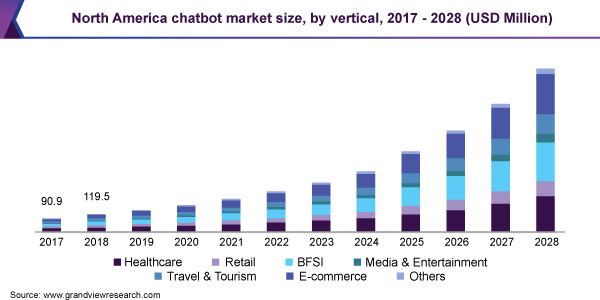
Source: Grand View Research
We’re currently at the tipping point where a growing number of businesses across a myriad of industries are seeing how useful they are for providing quality customer service while automating much of the process.
And for the most part, people are fine with using chatbots.
Research has found that 40% of millennials use chatbots daily, and 67% say they would buy a product through one.
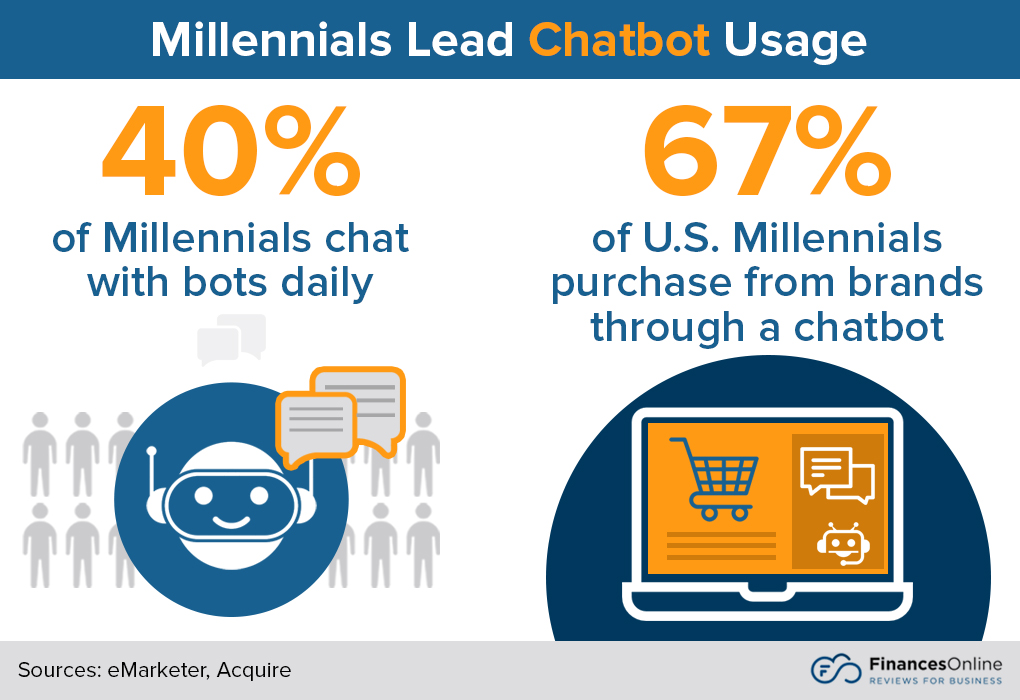
Source: FinancesOnline
When used correctly, it’s the ultimate win-win because customers have access to chatbots 24/7 where they can:
- Get answers to their questions
- Learn about products
- Find helpful information
- Get support
As for businesses, they can automate what’s historically been a time-consuming and often costly area of marketing. Rather than hiring staff to handle customer service with limited capabilities, chatbots are capable of handling a high volume of requests.
Also Read: Barriers to Marketing Analytics
And for those requests they can’t handle, chatbots can simply reroute it to the appropriate customer service rep, making it a powerful B2B marketing automation tool.
Studies have also found an increasing demand for chatbots among today’s consumers, with 35% wanting to see more companies using them. So this type of marketing automation platform is quickly becoming a must.
Automate Social Media Posting
Social media is an integral part of marketing for many companies. But it can also be time-consuming.
The average marketing team spends one to 10 hours on social media marketing each week.
However, a good chunk spends 11 to 20 hours. And some spend more than 40.
Source: Statista
When you’ve got core small business operations to run and customers to attend to, staying on top of social media can quickly become a burden.
Using social media marketing automation software, however, can ensure you continually post quality content and engage with your audience without killing your productivity.
Some key features include:
- Content scheduling
- Posting content at peak times of user engagement
- Republishing popular articles
Beyond that, some automation software allows you to use chatbots to swiftly respond to user comments and analyze customer data in real-time for better long-term decision-making.
In turn, you can dramatically cut back on the time you spend managing social media each week without hurting the user experience.
To quantify, this type of automation platform can save you 6+ hours per week.
As for specific platforms, some of the most popular are:
Engage High-Value Prospects
The 80/20 rule where 80% of the outcomes come from 20% of the causes applies to countless areas of business, and automation strategy is no exception.
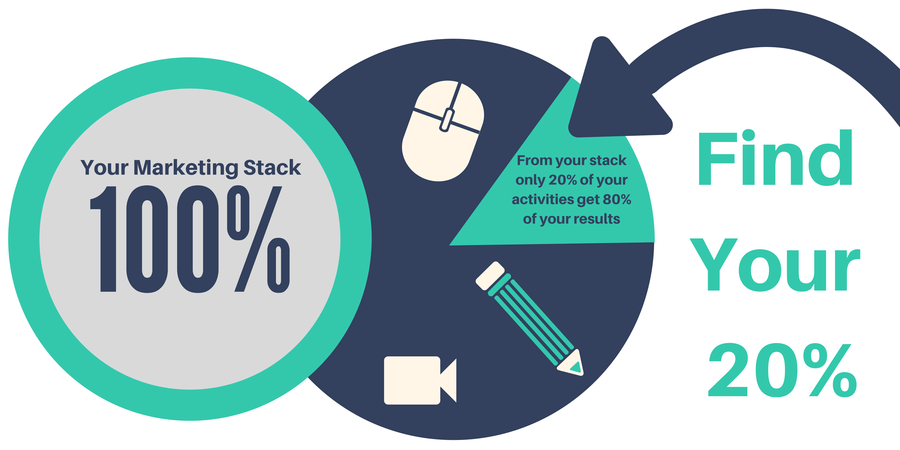
Source: Medium
While it doesn’t necessarily involve marketing automation directly, this rule can drastically reduce the amount of time expended while generating the same or better results.
The logic here is to focus the bulk of your attention on high-value prospects and create an A+, highly personalized experience, and spend less time on low-value prospects.
A simple example would be prioritizing people that visit a pricing page or spend a lot of time on your SaaS products.
Those that show signs of serious interest would want to be at the top of your list (the top 20%).
These are the people to:
- Focus your outreach on
- Offer case studies or testimonials to
- Encourage to check out a product demo
- Contact directly
The other remaining 80% would command less of your attention.
So by design, this strategy can shave off a significant amount of time from your workload.
Also, it’s perfect for providing a high level of personalization and sets the stage for robust engagement where you address the specific needs of each individual lead.
Sync Your CRM
About 82% of today’s companies use a CRM like Salesforce.
So why not use your CRM to streamline your marketing automation strategy?
Just think of all the insightful information that’s readily available, like:
- Lead contact info
- Company size
- Products of interest
- How a customer engages with your website
You can take this customer data to better understand a lead and provide them with valuable content to create an ultra-personalized customer experience and supply them with the right information throughout each stage of the buyer journey.
Rather than manually sifting through a massive database and meticulously looking for what you need, using your CRM as a marketing automation platform provides advanced insights with a fraction of the effort.
This makes it ideal for lead scoring, and more specifically, for identifying marketing qualified leads (MQLs) and sales qualified leads (SQLs).

Source: Medium
That way, you can capitalize on scorching hot SQLs right away and beat out your competitors.
Just look at how much higher the average conversion rate is when leads are contacted quickly.
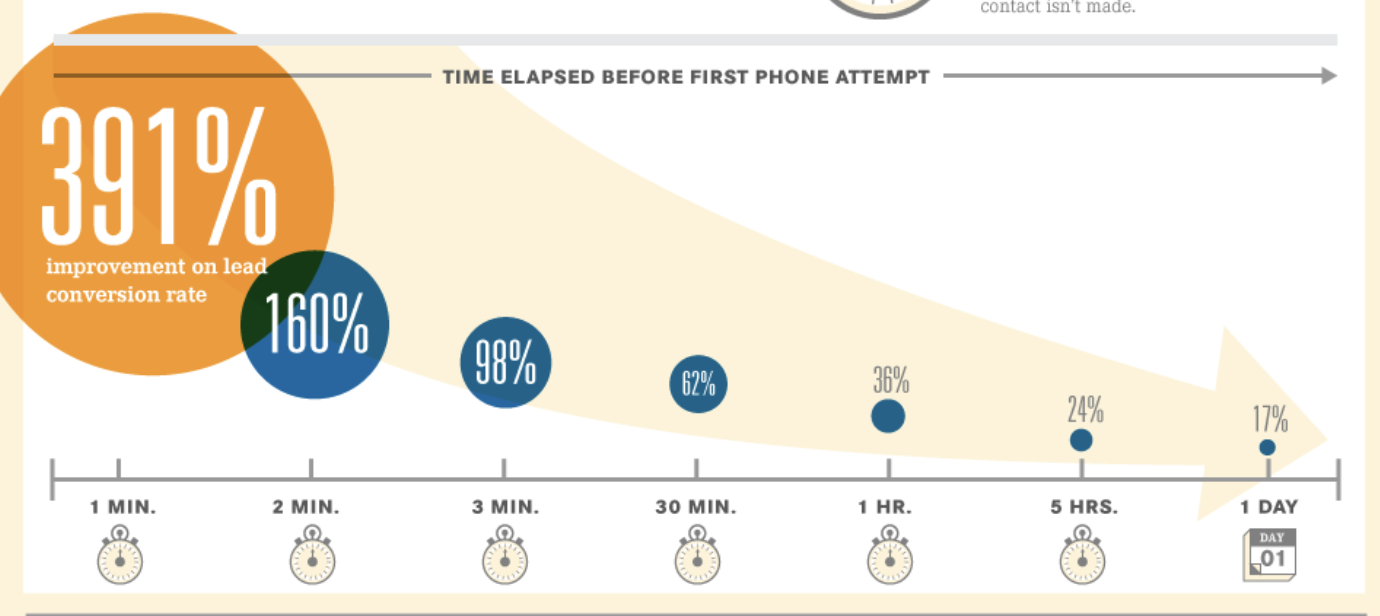
Source: Medium
There’s a 62% improvement in conversions when leads are contacted within 30 minutes.
And that number increases to:
- 98% when they’re contacted within three minutes
- 160% when they’re contacted within two minutes
- 391% when they’re contacted within one minute
So if you’re looking to save time and put your conversion rate on steroids, this marketing automation strategy is perfect.
Upsell Highly-Engaged Customers
Check out these stats.
70-95% of revenue for companies comes from upselling and renewals. And upselling also increases revenue by 10-30% on average.
When it comes to maximizing sales profitability without a lot of extra effort, upselling highly-engaged customers is a no-brainer.
Rather than constantly chasing down new customers (an inherently time-consuming process), this automation strategy zeroes in on existing customers you’ve already built rapport with and could potentially benefit from an upgrade or add-on.
Say, for instance, one of our customers was currently using our Startup plan and saw firsthand the impact Woopra made on improving the customer experience.
They were taking full advantage of our platform’s capabilities like advanced analytics and regularly engaged with our emails.
This would be the perfect customer to upsell to where we could suggest making the upgrade to our Pro plan, where they get a ton of more value through:
- 4 million more actions per month
- Automation
- A data loader
- Premium support

This is another win-win because you’re able to boost profitability while leveraging your existing customer base. And at the same time, your customers benefit from the added value they receive.
The key is to suggest upgrades and add-ons that are hyper-relevant to the individual customer and ensure the extra value justifies the price increase.
To streamline this process, you can use a marketing automation solution like Woopra which features Triggers that will notify your sales team when a user is ready to upgrade through a connected tool like Slack.
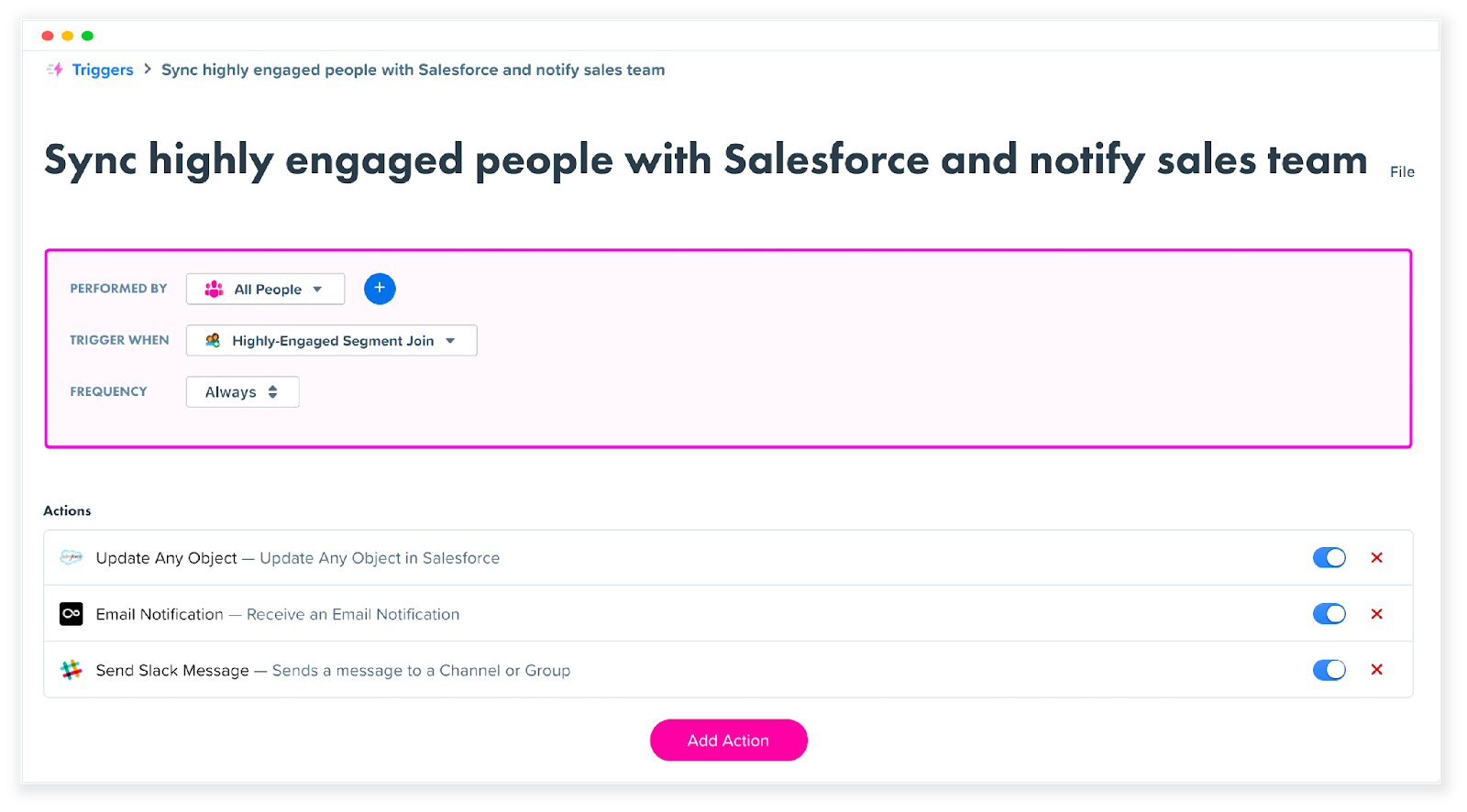
Use Abandoned Cart Outreach
While the data varies somewhat, the average abandoned cart rate across all industries is just below 70%.
So for every 10 people that add a product to their shopping cart, only three will follow through and make a purchase.
That’s not ideal. But fortunately, there are marketing automation tools that can help slash your abandonment rate.
Say a potential customer browsed through your site, checked out multiple products, and added two products to their shopping cart.
But for whatever reason, it didn’t result in a conversion.
You could use automation software to send them a friendly reminder of what they left in their cart.
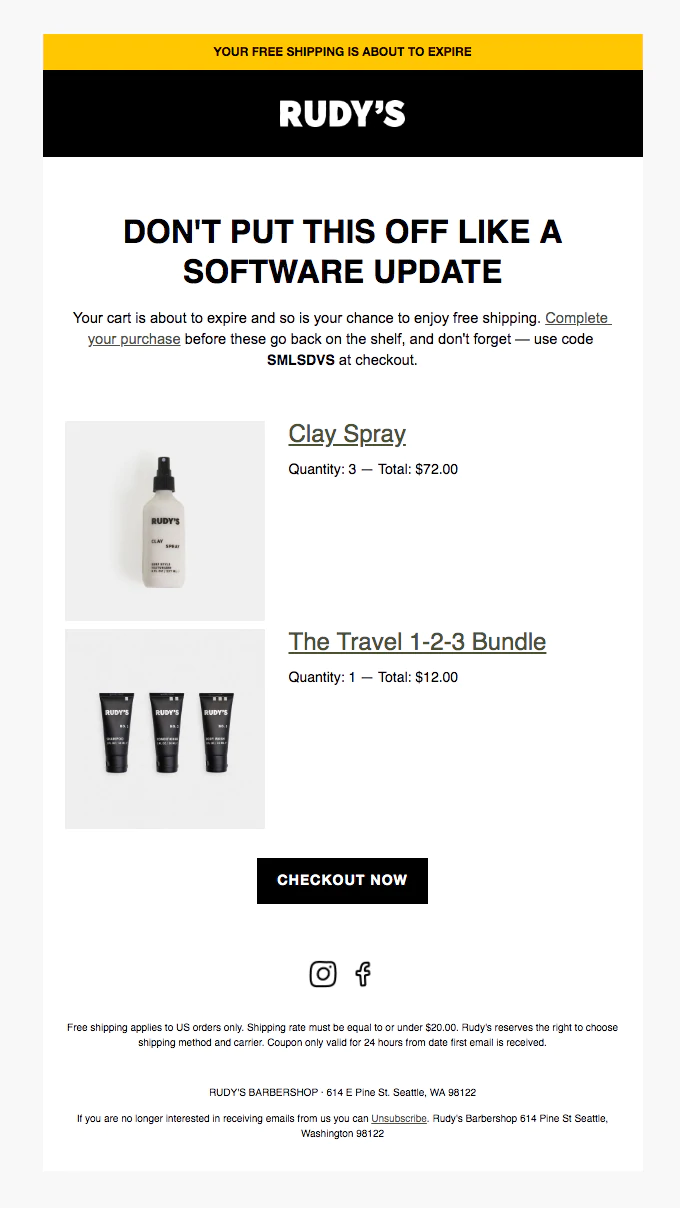
And to sweeten the deal, you could throw in a perk like free shipping to incentivize the email.
This is a simple yet highly effective way to cash in on the maximum number of leads you generate and requires very little effort.
In terms of conversion rates, the average is around 18%. However, those sent within 24 hours see slightly higher conversions at 20.3%.
Considering the average conversion rate for e-commerce sites is just 4.31% globally, that’s a dramatic improvement.
Reduce the Need for Manual Customer Service
We touched on this earlier with chatbots.
But there are several other ways to ensure customers get the level of service they need without eating up a ton of manpower.
A great example is creating a dedicated knowledge base where customers can find detailed information on their own without having to create a support ticket.
Canva pulls this off brilliantly on their site where they have an easy to use search box for customers to find what they’re looking for, as well as individual sections like:
- Account settings
- Payment, pricing, and billing
- Teams and groups
- Downloading
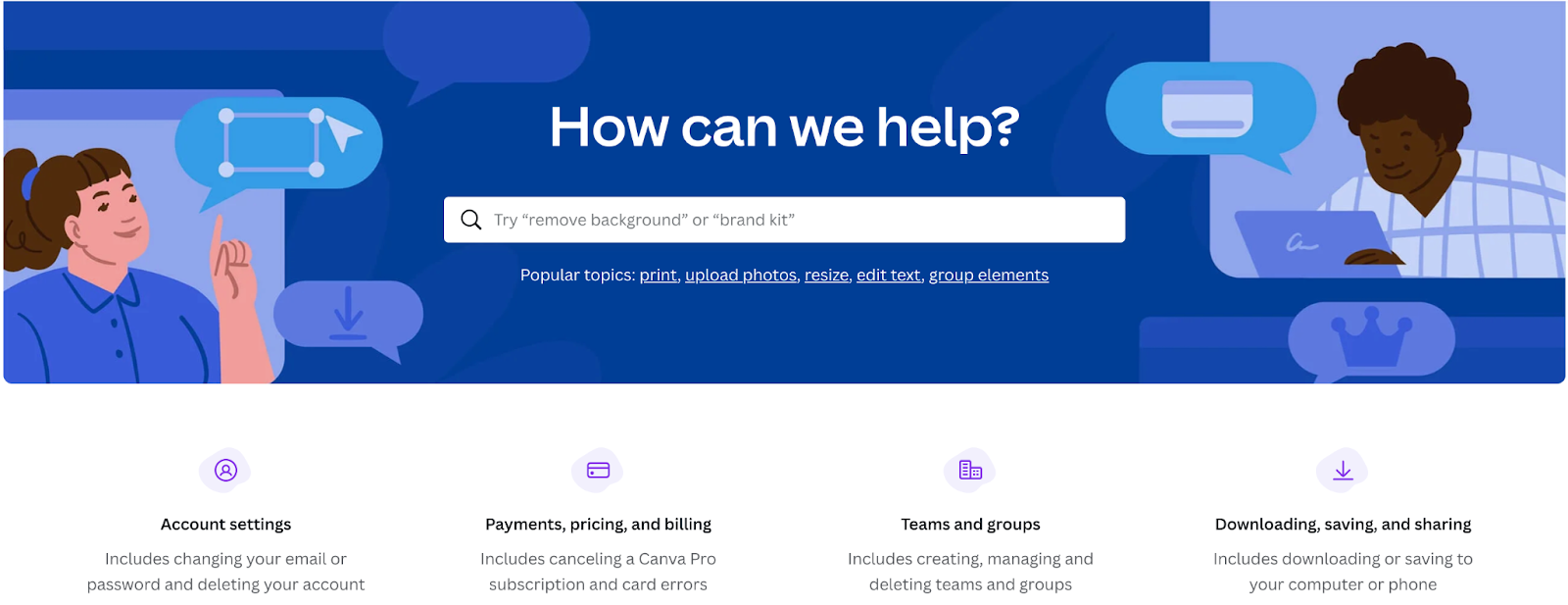
Source: Canva
Social media monitoring can alert your marketing team when one of your accounts needs attention so they don’t have to monitor accounts manually.
Finally, an automation tool can automate routine tasks like displaying a Net Promoter Survey to users who’ve been recently active, sending follow-up emails to support requests, and prioritizing enterprise tickets.
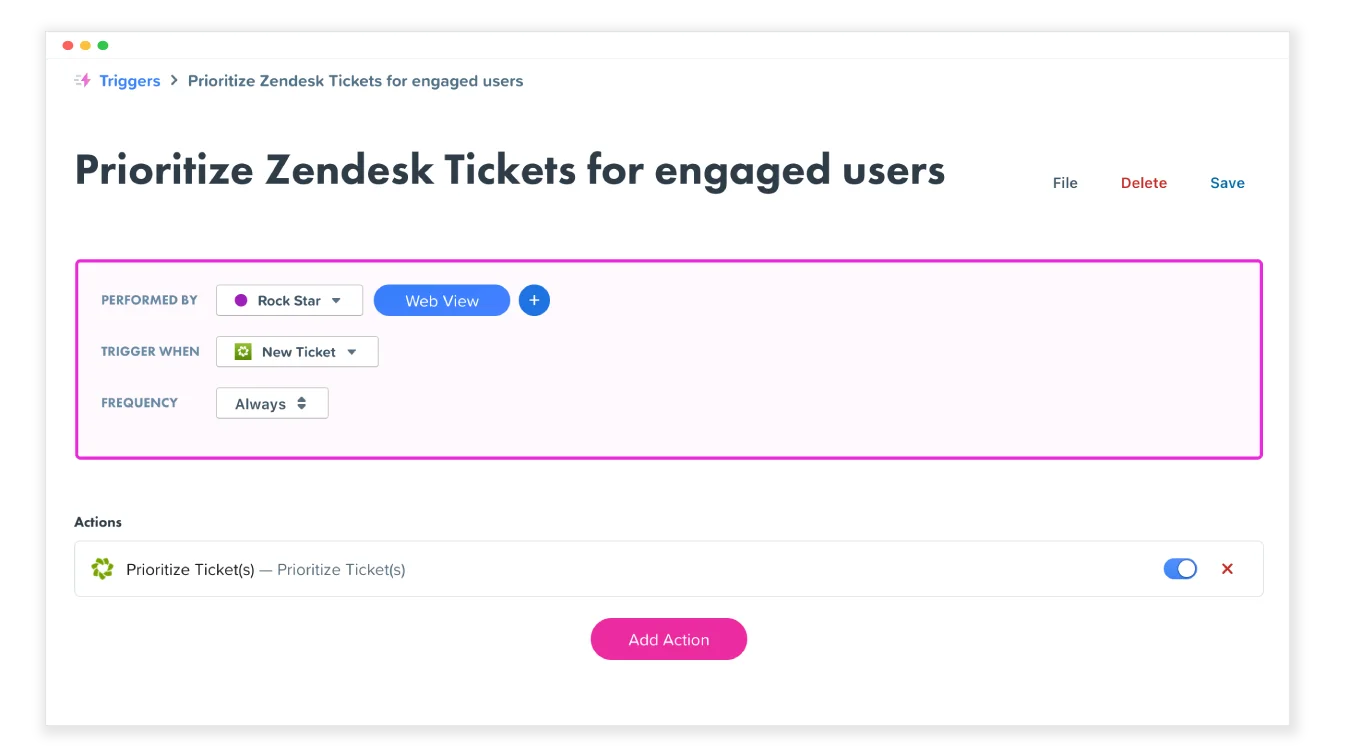
Woopra automation features
This keeps things running smoothly and makes for much happier customers.
A/B Test Different Automation Campaigns
Like most other areas of business, developing a successful marketing automation strategy takes time and continual refinement.
A big part of getting it just right is performing ongoing A/B testing to see what works and what doesn’t.
From there, you can eliminate inefficiencies and keep refining what works to make it even better.
Testing different lead nurturing sequences, for instance, can help identify how to move leads through your sales funnel most efficiently.
When testing a lead nurturing email marketing automation sequence, you might start with a formula like this:
- Confirmation email
- Initial welcome email
- Onboarding instruction
- Product recommendations
- Event email
That would be your control, or A.
From there, you would try out a different lead nurturing email sequence where you use a change up the formula which would be the variant, or B — something like this:
- Welcome email
- Onboarding instruction
- Curated content from your blog
- Product recommendations
Based on the open rate, click-through rate, and conversions of the control and variant, you would be able to identify which sequence worked better.
Another example is experimenting with different ad creatives which will, in time, help you find the perfect formula to target leads most effectively.
And testing different inbound marketing offers, such as a Google Ad, will help identify what your leads are most receptive to, as well as what they don’t respond to.

Source: MailerLite
That way your decisions are based on quantifiable customer data, and you can continually improve your marketing campaign until it’s firing on all cylinders.
Final Thoughts
Research has found that 63% of B2B marketers that use a marketing automation strategy outperform competitors that don’t.
From saving time to improving conversions to increasing profitability, it’s clear there’s a legit impact.
Not only can using marketing automation strategies like the ones above shave hours off of your workweek, but it can also create an immense competitive advantage and help you climb to the top of your industry.
If you haven’t already chosen your marketing automation platform, consider our best marketing automation tools article.

